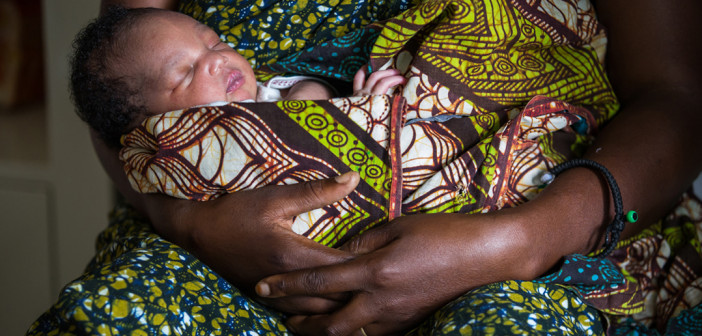Vodafone Foundation’s pioneering ‘ambulance taxi’ service reduces maternal mortality rate by a quarter
A first of its kind ‘ambulance taxi’ service created by the Vodafone Foundation to save the lives of high risk pregnant women in Tanzania, Africa, reduced maternal mortality rates by 27% in its first year.
Mobilising Maternal Health, a report by Touch Foundation, said the service, with its fleet of taxis and toll-free emergency line, had transported 2,887 high risk pregnant women in the Sengerema and Shinyanga districts of Tanzania, which are served by poor roads and just two hospitals. That is equivalent to three times the number of emergencies transported prior to the service’s inception in 2015.
The research analysed one full year of operations in the Sengerema district, during which 1,430 pregnant women experiencing an emergency were transported, reducing maternal mortality by 27% and saving the lives of 57 women.
Before the service was launched, many women in rural and remote communities in Tanzanian districts Sengerema and Shinyanga were not surviving pregnancy or were losing their babies as there was no means of getting them to hospital. Of those women transported and treated, 23% came from communities where no transport system was available beforehand.
An emergency line – equivalent to 112 in Europe, 911 in the US and 999 in the UK – includes a network of more than 100 taxi drivers responding to emergency calls. The distribution of the taxis ensures that they can reach the women up to 45 minutes quicker than an ambulance, if one were even available.
The taxis take pregnant women on what is often a three hour journey to reach the nearest hospital. Once women arrive at hospital, the emergency taxi drivers are paid, at no cost to the women, using Vodafone’s mobile payment service M-Pesa.
Previously, there was no way for many pregnant women with serious complications, many of whom are teenagers, to get to hospital in the two districts. Despite a population of two million people in Sengerema and Shinyanga, only 10 ambulances service the expansive area, leading to large numbers of maternal and infant deaths. The service, created alongside NGO partners Touch Foundation, Pathfinder International and the US Agency for International Development (USAID), is currently operational in one of Shinyanga’s six districts and is set to be expanded to the entire Shinyanga region, which itself has a total population of 1.5 million people.
The report concluded that the programme provided a ‘lean and cost effective emergency transportation system.’ It said that running the programme in the Sengerema/Buchosa district would cost the Tanzanian government approximately $2,000 per maternal life saved, and the service has the potential to be scaled nationally.
As part of the wider programme, a network of 250 community health workers in Sengerema and Shinyanga have been taught Tanzania’s newborn and child health curriculum and an additional 209 health workers have been trained in life-saving emergency obstetric and newborn care. Touch Foundation has helped improve facilities in hospitals, including building two theatres for Caesarean sections.
A mobile application has also been developed for the community health workers, which helps them to manage more than 10,000 pregnant women and identifies those who are high risk cases.
Tanzania is one of the countries with the highest maternal mortality rates worldwide. There were 11,500 maternal deaths in 2015. Maternal mortality has increased from 454 in 2010 to 556 in 2015 per 100,000 live births. Tanzania is aiming to reduce maternal mortality ratio to 292 deaths per 100,000 live births by 2020.
Vodafone Foundation Director Andrew Dunnett, said: “This pioneering service has provided much-needed emergency care for thousands of high risk pregnant women and shows the power of mobile and Vodafone’s M-Pesa to impact health systems. The report shows the ambulance taxi programme is a highly efficient and cost effective solution for countries with low income, high maternal mortality and limited transport to treatment. Government and aid agencies should be directing their resources to explore a further roll out of this platform.”





